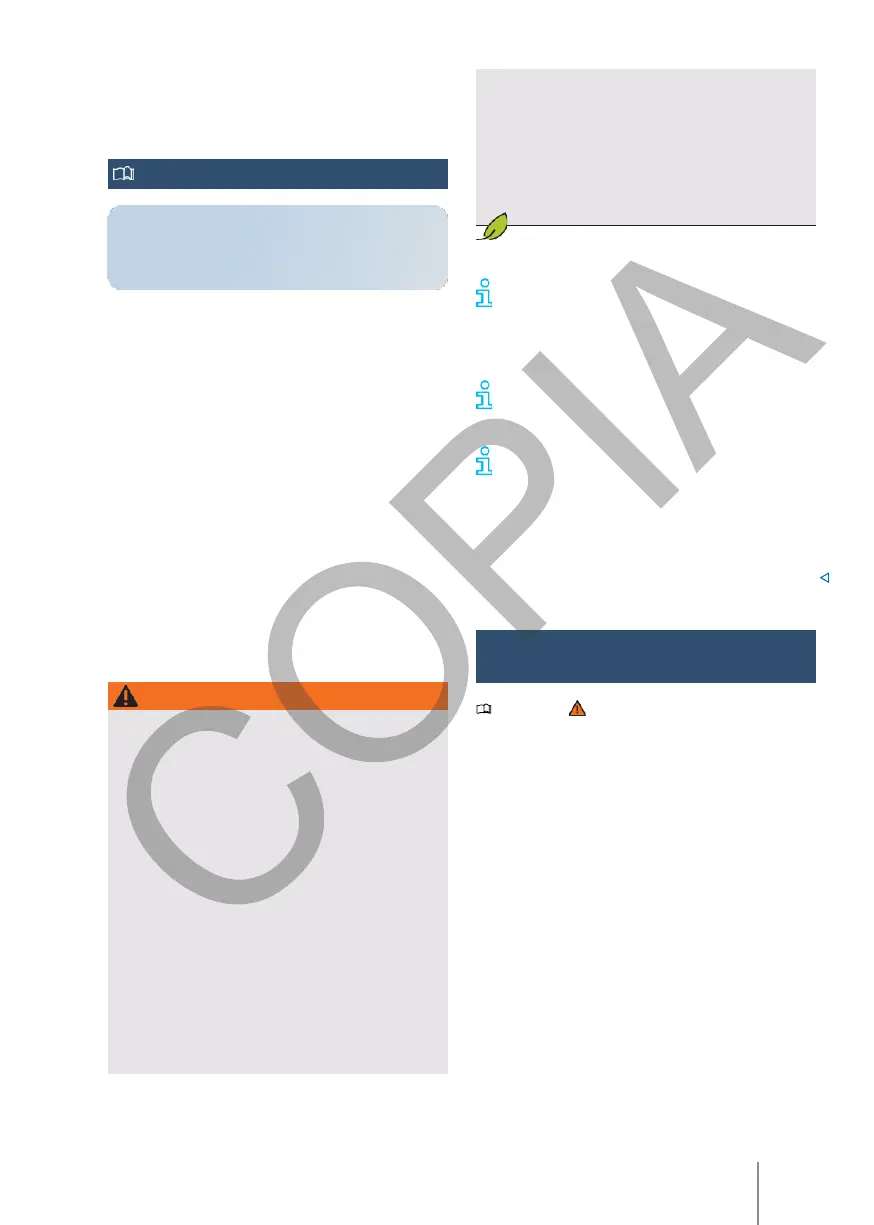The tyre monitoring system warns the driver if
the tyre pressure is too low.
If the tyre pressure is too low, adjust the tyre
pressure to the desired value.
The vehicle is mounted on the vehicle when cold.
→ p. 263.
•
Periodically check tyres for signs of wear or
damage.
•
Never exceed the maximum speed and load
capacity of the tyres fitted.
Introduction to the topic
Wheels and tyres
Tyre
control systems
The following tyre control systems are available for
this vehicle:
Tyre control system
- It monitors various parameters (e.g. rolling
circumference) of all four tyres during driving by
means of the ABS sensors (indirect
measurement).
The reference pressure of the tyre monitoring
system is the recommended pressure for the
factory-fitted tyres, measured when the tyres are
cold and the vehicle is fully loaded. The reference
pressure corresponds to the data on the tyre
pressure sticker → p. 263.
If the correct tyre pressure has been set on all
four tyres, the tyre monitoring system must be
readjusted → p. 257. This adapts the reference
pressure to the current tyre pressure.
Tyre pressures that are too low increase fuel
consumption and the
tyre wear.
The first time you drive at high speed with
new tyres, they may be
The air pressure warning is a warning that the air
pressure will be reduced to a minimum and, as a
result, an air pressure warning will be given.
Replace old tyres only with tyres approved by
Volkswagen to
the type of vehicle concerned.
Do not rely on the tyre monitoring system alone.
Check the tyres with
regularly to ensure that they are in the correct
condition and do not show signs of damage, e.g.
punctures, cuts, cracks, etc.
or dents. Remove any foreign matter that may have
become lodged in the tyre profile, provided it has
not penetrated the tyre.
Please note at the beginning of this chapter
on
page 257.
Description of operation
The tyre monitoring system compares, among other
things, the wheel rotation and thus the rolling
circumference of each wheel by means of the ABS
sensors.
The rolling circumference may change:
—
If the tyre pressure has been changed.
—
If the tyre pressure is too low.
—
If the tyre structure is damaged.
—
If the vehicle is uneven due to the load.
—
If snow chains have been fitted.
—
If an emergency wheel is fitted.
—
If one wheel per axle has been changed.
In the case of a sporty driving style, when driving on
roads without a firm road surface or in winter
conditions, or when driving with a tyre, the driver must
be able to drive on the road in a safe and comfortable
manner.
The intelligent technology of the tyre control
system cannot overcome the limits imposed by the
laws of physics and only works within the limits of
the system. Improper handling of wheels and
tyres can cause sudden loss of pressure, tread
separation and even tyre blowout.
•
Check the tyre pressure regularly and always
keep to the specified values → page 263.
If the tyre is too low, the tyre could become
so hot that the tread could detach and the
tyre could burst.
•
Always maintain the correct tyre pressure
according to the tyre pressure sticker,
measured when the tyres are cold → p. 263.
•
Check the tyre pressure regularly when the
tyres are cold. If necessary, check the tyre
pressure regularly when the tyres are cold.

